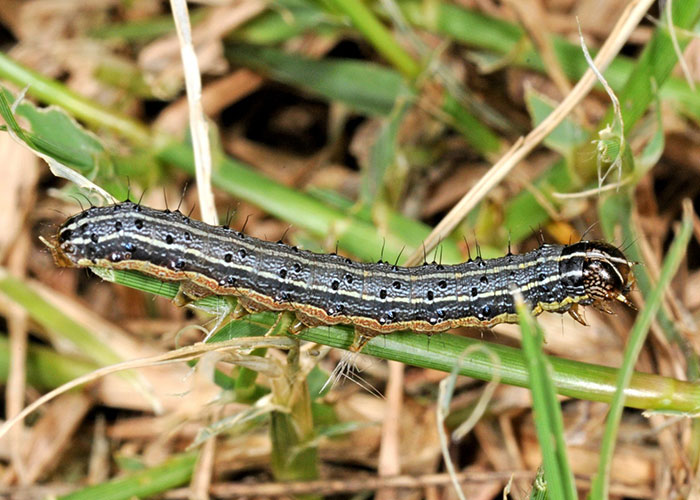
There has been an invasion. Fall armyworms are marching in record numbers across hayfields and pastures from the mid-South to Ontario. In some cases, they’re leaving little behind but stems.
“My best advice is to scout hay and alfalfa fields for infestations of fall armyworm caterpillars, noting the size of the caterpillars and what portions of the fields are infested,” notes John Tooker, an extension entomologist with Penn State University. “If you find more than two to three caterpillars per square foot, it will likely be economical to treat that population.”
Entomologists all agree that it is most effective and economical to treat fields when the caterpillars are small.
The lowest cost chemical management option for controlling fall armyworms in pastures and hayfields is a pyrethroid-based insecticide, but they are only effective on worms that are less than 3/4-inch long. Other chemical options are available, but they come with a higher price tag.
“Fall armyworm caterpillars vary in color from greenish to tan to dark brown with stripes along the body,” notes Kelley Tilmon, an entomologist with Ohio State University Extension. “They can be easily confused with other species, but a good identifier is an inverted white ‘Y’ behind the head. The current caterpillars are second generation. If we have a warm fall, we could possibly see a problem third generation, especially in forage, cover crops, and winter wheat planted before the fly-free date. Because of this, scouting for fall armyworm should continue for the rest of the season,” she adds.
Cut to control
If a hayfield is close to having enough growth for harvest, Ohio State University Extension Forage Specialist Mark Sulc recommends cutting it as soon as possible.
“If your hayfield is not quite ready for harvest, scout it now and continue to scout it every couple of days for fall armyworm presence until you do cut it,” Sulc says. “Be prepared to make a rescue treatment.”
Sulc notes that if an established hayfield has already been damaged by fall armyworm, cut it and salvage what you can, or mow off the stubble that is left. “Established alfalfa should recover from having the leaves being stripped off,” he says.
Hay producers need to continue to monitor hayfields for the rest of the growing season. Sulc notes that there can be overlapping generations of fall armyworm, and the numbers can grow exponentially with each advancing generation.
Finally, the forage specialist notes that new summer seedings of grass, alfalfa, or red clover that are damaged severely by fall armyworm may be completely lost. “Be especially attentive for fall armyworm in any new seedings you have made late this summer,” Sulc warns.

